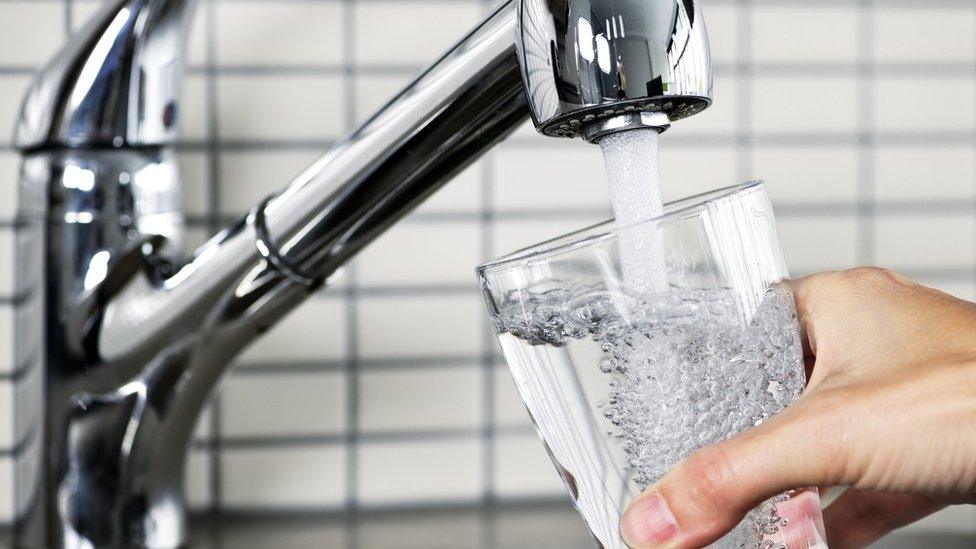Unsafe water failures 'put 900,000 people at risk'
- Published

Ireland's Environmental Protection Agency (EPA) has criticised "abject failures" in the operation of two drinking water plants that led to "illness" in one community.
Unsafe water entered the public drinking water supply in August, external.
In Gorey, County Wexford, there were 52 confirmed cases of illness and a number of hospital admissions, the EPA said.
Irish Water said all measures would be taken to ensure no recurrence, adding the water was safe to drink.
The EPA criticised "unacceptable" delays in notifying authorities.
EPA director general Laura Burke said delays in notifying her organisation and the Health Service Executive (HSE) meant 900,000 water consumers were left unaware and did not have the opportunity to protect themselves.
"Immediate actions must be taken by Irish Water and the local authorities to ensure these failures do not arise again," said Ms Burke.
EPA investigations at Ballymore Eustace in County Kildare, which serves greater Dublin, and at Gorey revealed what the agency called the "abject failure of managerial oversight, operational control and responsiveness by Irish Water and local authorities in terms of their respective roles to deliver safe and secure drinking water".
Power failure
At Ballymore Eustace the plant produced unsafe drinking water for a period of up to 10 hours on 20-21 August.
This is the largest water treatment plant in the country, serving approximately 877,000 consumers in the greater Dublin area.
The EPA said this incident was not notified by Irish Water to the EPA or to the Health Service Executive (HSE) until 1 September.
At Gorey, a power failure and a chlorine pump failure resulted in water leaving the plant and entering the public supply without the appropriate level of disinfection for about five days from 19-24 August, the EPA said.
The EPA said it was 26 August before it was notified and the HSE was made aware.
This meant people were not told in both instances that they should be boiling their drinking water, the EPA added.
'Serious illness'
To date there has been 52 confirmed cases of illness associated with the Gorey incident and a number of hospitalisations, the EPA said.
"In both cases the affected consumers were left unaware of the risks they faced and did not have the opportunity to protect themselves, and in the case of Gorey serious illness was detected in the community," the EPA said.
The EPA said that while it is satisfied that both plants have now returned to normal operation, "immediate and significant improvement" in the provision of water services by Irish Water and local authorities is required to ensure the public are provided with safe and secure drinking water and that public health is protected.
Niall Gleeson, Irish Water managing director, said the organisation agrees that both incidents were "unacceptable".
"In both instances, late notification of issues relating to the disinfection process at the plants potentially put public health at risk," Mr Gleeson said.
"In discussions today with the chief executives of Wexford and Dublin City Council we reconfirmed that all measures would be taken to ensure there would be no re-occurrence of drinking water issues and can confirm to all customers the water is safe to drink. Irish Water has engaged again with all Local Authorities on the need to report incidents to allow for timely risk assessments to protect public health."